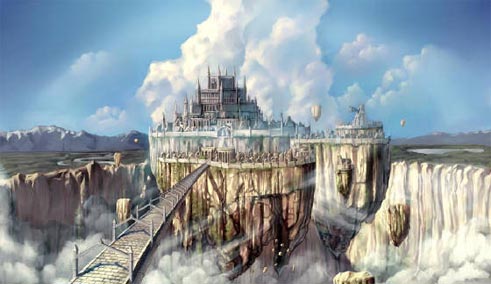Haakon, it is my understanding that the 'Ea!' moment will be the end of Episode 1, and entering Arda will be the beginning of Episode 2, so we may not see it actually happen. The exceptions will be Melkor, who enters Arda from the Void at the end of Episode 3 (and possibly saw the other Ainur go earlier), and then when Tulkas arrives, we show him....showing up....on Arda (not leaving the Void, though). So, if that transition - leaving the Halls to go to Arda - is too much, we can perhaps skip that.
ouzaru, what we are suggesting is visual metaphor as well. Of course there aren't any actual Halls, any more than Yggdrasil is actually a tree. You have to show something, though, and it has to represent the concept in question. You seem to think it very important to emphasize the endlessness of the Halls, and I am at a loss as to why that matters more than other concepts and how to accomplish it. I think that is where the breakdown has occurred. Because....I'd have to fall back to 'blank white space stretching forever' to achieve that, and you are suggesting a complete landscape with a shore with water and....I'm just confused. I think we do need the Void to be a Void, and we need to see Arda formed in it, and....what can that be other than blank darkness? Would it help if the substance of the nebula were pouring off in a cascade in like a waterfall on the boundary with the Void?
We are all in agreement that we do not want the Timeless Halls to look ridiculous or hokey. The question is what causes that.
ouzaru, what we are suggesting is visual metaphor as well. Of course there aren't any actual Halls, any more than Yggdrasil is actually a tree. You have to show something, though, and it has to represent the concept in question. You seem to think it very important to emphasize the endlessness of the Halls, and I am at a loss as to why that matters more than other concepts and how to accomplish it. I think that is where the breakdown has occurred. Because....I'd have to fall back to 'blank white space stretching forever' to achieve that, and you are suggesting a complete landscape with a shore with water and....I'm just confused. I think we do need the Void to be a Void, and we need to see Arda formed in it, and....what can that be other than blank darkness? Would it help if the substance of the nebula were pouring off in a cascade in like a waterfall on the boundary with the Void?
We are all in agreement that we do not want the Timeless Halls to look ridiculous or hokey. The question is what causes that.
Last edited:







